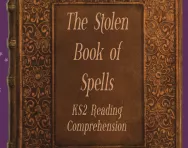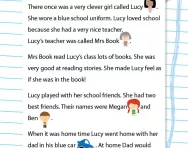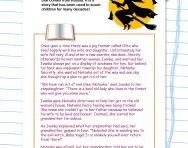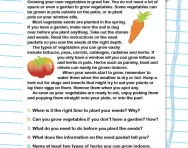Important update from TheSchoolRun
For the past 13 years, TheSchoolRun has been run by a small team of mums working from home, dedicated to providing quality educational resources to primary school parents. Unfortunately, rising supplier costs and falling revenue have made it impossible for us to continue operating, and we’ve had to make the difficult decision to close. The good news: We’ve arranged for another educational provider to take over many of our resources. These will be hosted on a new portal, where the content will be updated and expanded to support your child’s learning.
What this means for subscribers:
- Your subscription is still active, and for now, you can keep using the website as normal — just log in with your usual details to access all our articles and resources*.
- In a few months, all resources will move to the new portal. You’ll continue to have access there until your subscription ends. We’ll send you full details nearer the time.
- As a thank you for your support, we’ll also be sending you 16 primary school eBooks (worth £108.84) to download and keep.
A few changes to be aware of:
- The Learning Journey weekly email has ended, but your child’s plan will still be updated on your dashboard each Monday. Just log in to see the recommended worksheets.
- The 11+ weekly emails have now ended. We sent you all the remaining emails in the series at the end of March — please check your inbox (and spam folder) if you haven’t seen them. You can also follow the full programme here: 11+ Learning Journey.
If you have any questions, please contact us at [email protected]. Thank you for being part of our journey it’s been a privilege to support your family’s learning.
*If you need to reset your password, it will still work as usual. Please check your spam folder if the reset email doesn’t appear in your inbox.
Teachers’ tips for reading comprehension

Why does reading comprehension matter?
‘Comprehension is the fundamental purpose for reading,’ explains Donna Thomson, author of SPECtacular Story Talk. ‘We read to understand the images, words and concepts on a page that are the author’s meaning and message. If a child can’t understand what he’s reading, he gains little pleasure from it and it greatly hampers his ability to learn.’
Schools use a variety of methods to check and consolidate children’s understanding of texts, but reading comprehension exercises – where they’re given a fiction or non-fiction text to read, and then have to answer questions about that text – are commonly used, and also form part of English SATs in Years 2 and 6.
What reading comprehension standard is expected of my child?
A child’s reading comprehension should improve as they progress through the school, and their answers to comprehension questions should become more insightful and sophisticated.
The following example answers (with spellings corrected) show how children in different years might answer a comprehension question:
Year 1
Describe what sort of person Cinderella is.
‘Cinderella is lovely. Cinderella is helpful. Cinderella is kind because she does all the work. She is sad because she can’t go to the ball. She is happy because she has been married to the prince.’
Year 3
Why did the artist decide to make a horse that day?
‘I think he did that because the white parts of the waves made him think of the way horses go up and down when they move.’
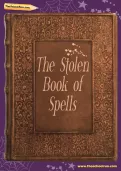
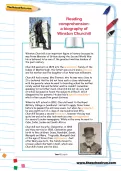
Download brilliant reading comprehension resources
- The Stolen Book of Spells workbook
- PLUS 100s of fantastic reading comprehension worksheets
Year 4
‘Huey… sat up straight on the couch. I sat back and tried to be as small as I could.’ Explain why Julian tried to make himself small.
‘He tried to be small so that his father couldn’t see him and he didn’t want to get told off for the trick because he thought his dad would be angry. Julian was worried that he would get in trouble, so he tried to hide.’
Year 5
At the end of the holiday, Joe was sad about Oran leaving. Does this surprise you? Explain as fully as you can using parts of the story.
‘It was partly surprising for me because, at the start of the story Joe didn’t like Oran and thought he was strange. During the story, however, they made good friends. The holiday was more fun for Joe when Oran was there and he didn’t want someone he cared about to leave.’
Year 6
The inside of Sarah’s shop was very different from the market described at the beginning of the story. Explain fully the differences between the shop and the market.
‘The market was really crowded and noisy with “shrill cries,” but in contrast the shop is quiet and Sarah keeps it clean. The smell of all the people “jostling” and moving about at the market is very different compared to Sarah’s shop which the author describes as “pleasant” and smelling of “spices” and sugar.’
How to help your child with reading comprehension
- ‘If your child is a confident reader, ask him to read through the passage by himself first,’ says Donna. ‘Then re-read the extract together, clarifying meanings of unfamiliar words and ideas in the text.’
- ‘Don’t accept the decoding of words as evidence of your child’s comprehension,’ says teacher Louise Crocker. ‘He needs to understand the meaning, inference and deductions within the book, which may not be obvious.’
- ‘Spend a good amount of time thoroughly reading the text before looking at the questions, and really make sure your child has understood what he is reading about,’ says Louise.
- ‘Discuss the contents by asking simple questions about the characters, their actions and the setting,’ says Donna. ‘Discuss what the problem is in the story, how the characters try to solve it and what happens in the end. Make predictions about what might have happened before the beginning of the extract, or what might happen next.’
- ‘To help your child understand inference, encourage him to look out for anything that seems a bit strange in the context of the text,’ says assistant head teacher Amy Dziedzicki. ‘For example, in the sentence, “’Oh marvellous, I’ve got ironing to do,’ said Mum,” does anything strike him as being not quite what it seems?’
- ‘Ensure your child reads the questions properly,’ says Louise. ‘Even simple questions can trip children up if, for example, they are asked to tick three boxes to show how a character is feeling, and only tick two.’
- ‘Begin by looking for key words in the first question,’ says Donna. ‘Often the first question is literal and prepares the reader for more in-depth questions to follow.’
- ‘Make sure your child uses the text as evidence to back up his answers, rather than his general knowledge,’ says Amy.
- ‘You don’t have to complete the questions in order,’ says Louise. ‘I always encourage children to answer the questions they find easiest first of all, then go back through and try the harder ones. Don’t waste lots of time thinking about a question they are really stuck on.’
- ‘Look at the marks allocated to each question,’ says Amy. ‘A one-point question is likely to be looking for a couple of key words; a three-point question will require the child to understand inference, make deductions and provide evidence for his answer.’
- ‘Remind your child that he always needs to answer in full sentences, using part of the question and the information in the text to guide their answer,’ says Donna.
- ‘Reading comprehension is not a memory test; all the information your child needs is there on the page,’ says Amy. ‘Encourage patience and perseverance; if the answer isn’t immediately obvious, get your child to re-read the text, and it may come to him.’
Find reading comprehension worksheets for KS1 and KS2 on TheSchoolRun, read about different aspects of reading comprehension, explained for parents, or try our teacher tips for reading comprehension and SATs.

